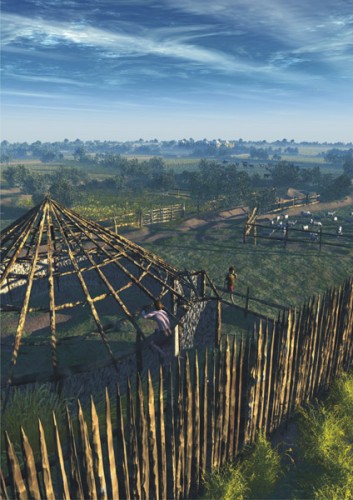
Bronze Age settlement construction within the landscape.
Between 2,000 and 1,700 BC the centuries-old mechanisms for controlling land access and tenure were breaking down, though we don’t know why. It could have been due to population growth or any number of unrelated factors.
The new solution adopted by the community and families at this time was to divide the landscape up with ditches and banks topped by hedges into distinct ‘farmsteads’. To allow these fields to be laid out we know that the landscape had been largely cleared of woodland. It would appear that each family group lived and farmed in scattered settlements within their respective farmsteads, which were further subdivided into small fields.
Over time the boundaries between the farmsteads developed into trackways or lanes used to move animals around the landscape. Pollen and plant evidence from waterholes show that people were keeping sheep and cattle in the fields and also growing cereals. If we were able to go back in time and visit Heathrow around 1,500 BC we would see a landscape of small settlements, fields and trackways. This is the origin of the sort of rural English landscape that we would be familiar with today
